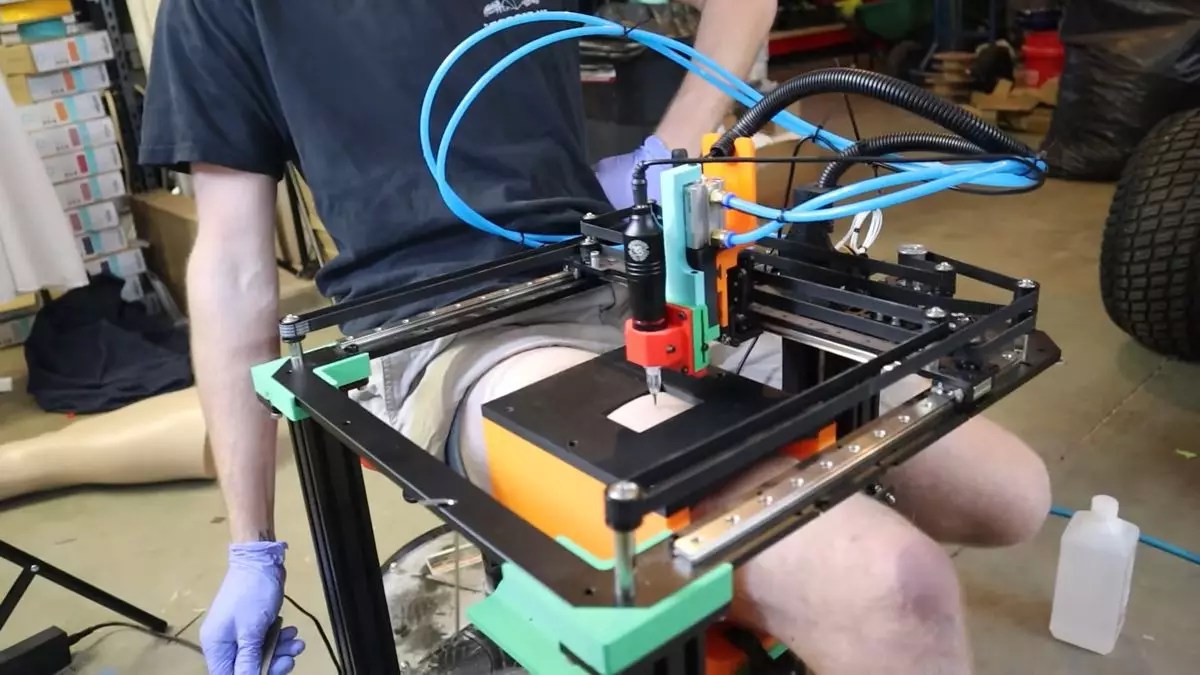In the realm of body art, traditional tattooing methods have existed for centuries, characterized by skilled artisans inking intricate designs onto skin. However, technology has permeated this art form, leading to fascinating experimentation. A recent endeavor by YouTuber Emily The Engineer has taken this innovation to another level by repurposing a 3D printer into an unconventional tattoo machine. The concept may seem bizarre yet intriguing, as Emily attempts to meld engineering with body art in an attempt to explore the boundaries of creativity and cost-effectiveness.
Emily’s journey began with the disassembly of an old 3D printer, famously recognized for producing a plethora of printed objects. Unlike conventional 3D printing, she sought to create a device that could transfer ink onto human skin. The first challenge involved recalibrating the printer’s firmware to bypass settings designed for typical printing materials while incorporating a tattoo gun into the mix. This technical alteration provides a glimpse into the intersection of engineering and artistry, a domain where most denizens of the tattoo community would be quite apprehensive.
Once the printer was modified, Emily engaged in preliminary sketches to establish a workflow for the tattooing process. Practicing on various surfaces—particularly emphasizing the importance of Z-hop techniques to avoid unintended markings—was vital for debugging potential issues. These initial trials provided a foundation for what would culminate in a direct tattooing experience on a live volunteer, offering both promise and risk in the name of innovation.
Despite the playful and experimental nature of this project, safety remained a paramount concern. Emily introduced a panic lever to halt the tattooing process in case her volunteer, Dan, experienced any adverse reactions or intimidation during the procedure. This safety mechanism embodies a responsible approach to what could easily become a reckless endeavor. The foresight in determining how a 3D printer might operate on organic surfaces is commendable and indicates a depth of consideration often overlooked in experimental projects.
However, Emily faced another pivotal challenge: anatomical contours. Dan wanted the tattoo on his thigh—a notably non-flat surface. Rather than redesigning the 3D printer or suspending the project, a creative solution was found in constructing a specialized bracket to flatten Dan’s thigh. This innovative workaround highlights the resourcefulness needed when merging technology with the intricacies of the human body.
The moment Dan underwent the tattooing procedure was undoubtedly tense, both for him and for Emily. Once the machine was calibrated and adjusted to Dan’s leg, the needle finally made contact with his skin—a vital test of their collective innovation. Dan’s reaction to the sensation was unexpectedly composed; he reported that the experience “wasn’t bad,” resulting in him walking away with a new tattoo—an outcome that might surprise traditionalists who often scrutinize any deviation from the norm.
While the end result may not have been a masterpiece, it stood as a testament to ingenuity and a desire to experiment with technology’s capabilities. This foray into tattooing via a 3D printer diverges sharply from classic artistry and, in doing so, raises profound questions about how future technology could reshape the boundaries of body art.
What Emily The Engineer accomplished with her daring project is a glimpse into a future where technology and traditional crafts can intertwine. Although not fully realized in terms of aesthetics, her venture showcases a remarkable direction for both engineering and art. While her tattooing machine may not rival the precision of seasoned tattoo artists, it poses a compelling argument for exploring the fusion of creative practices with modern innovation. As we embrace the future, perhaps more artists will follow in her footsteps, leading to a revolution within the world of body art.


Leave a Reply